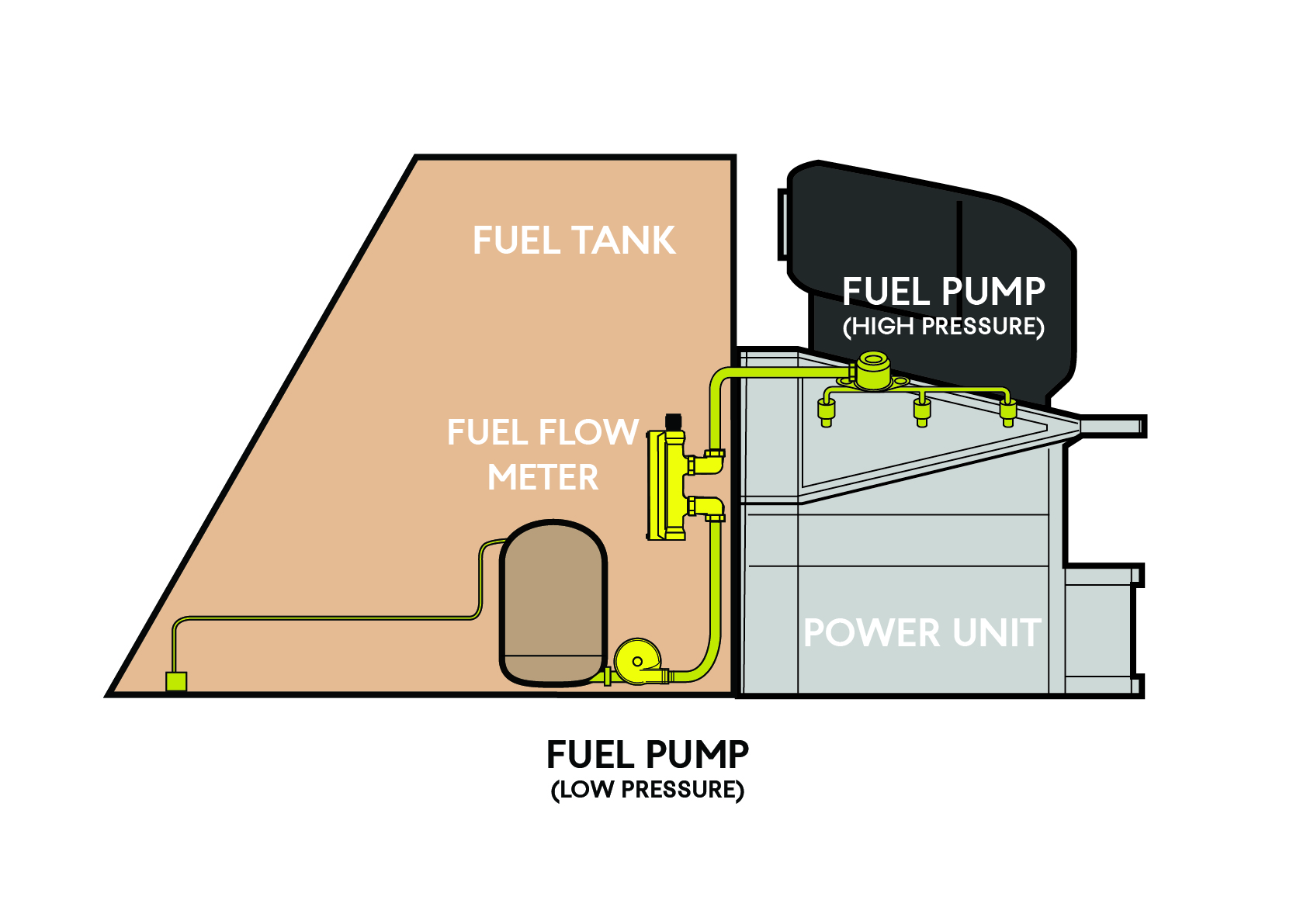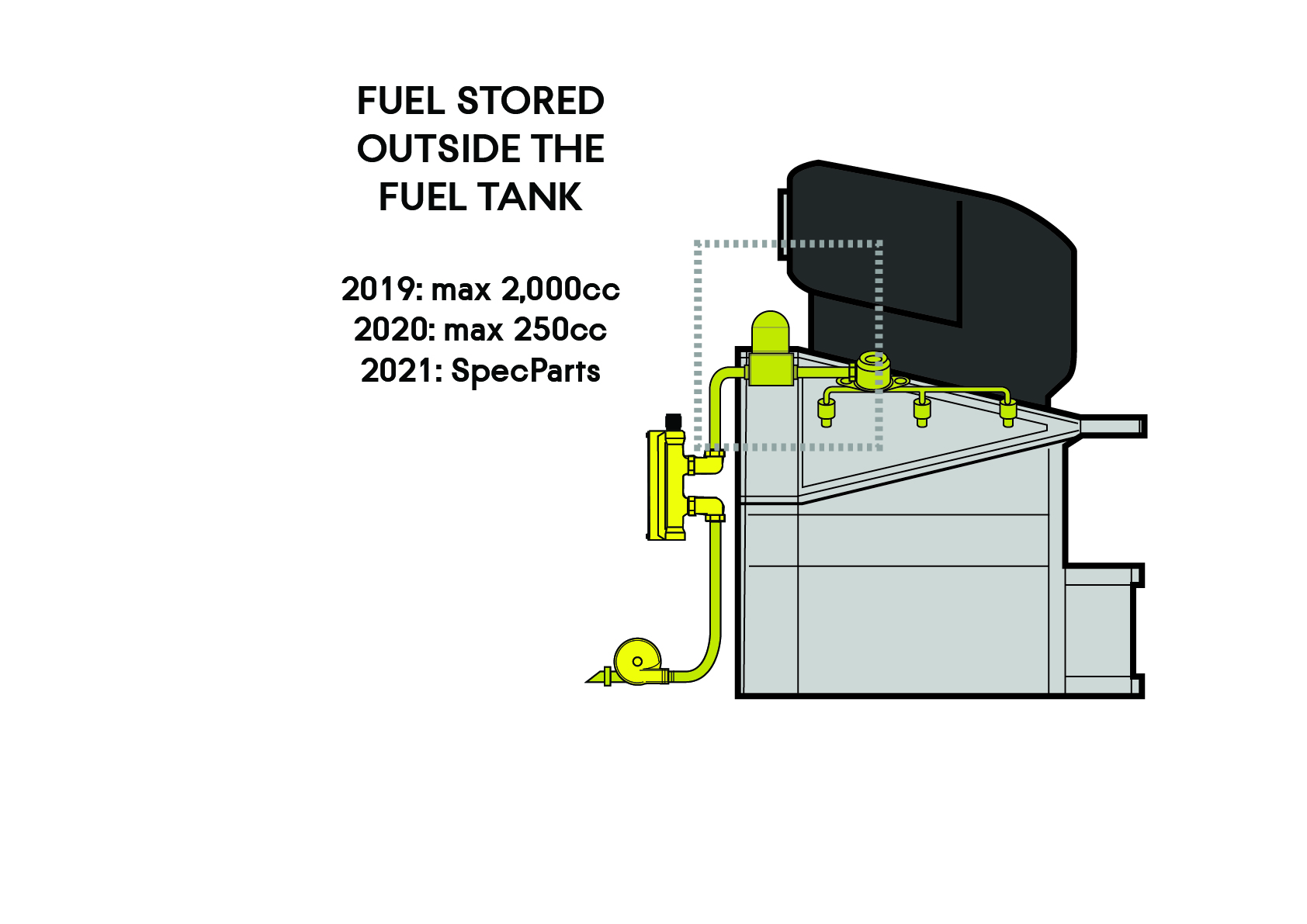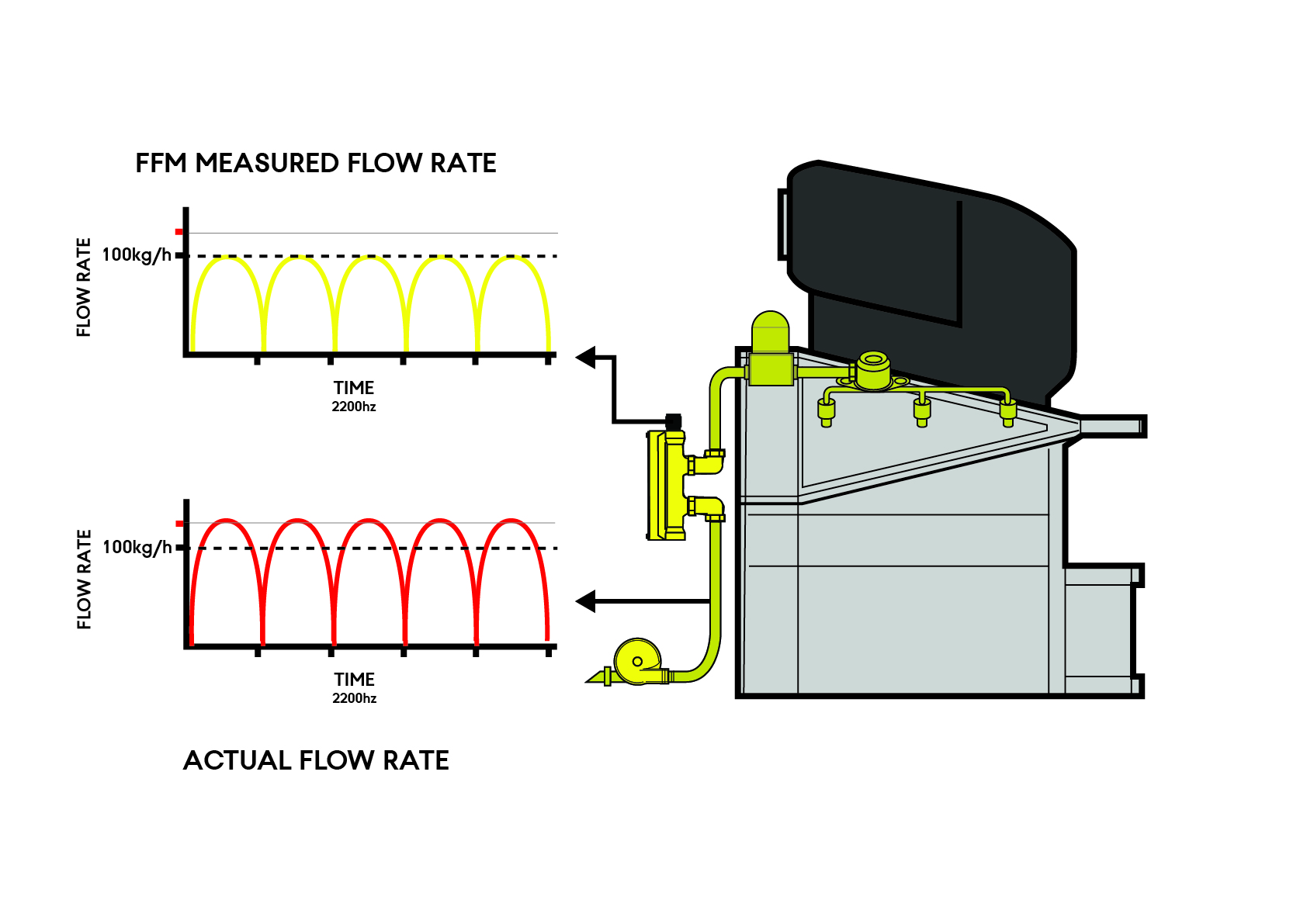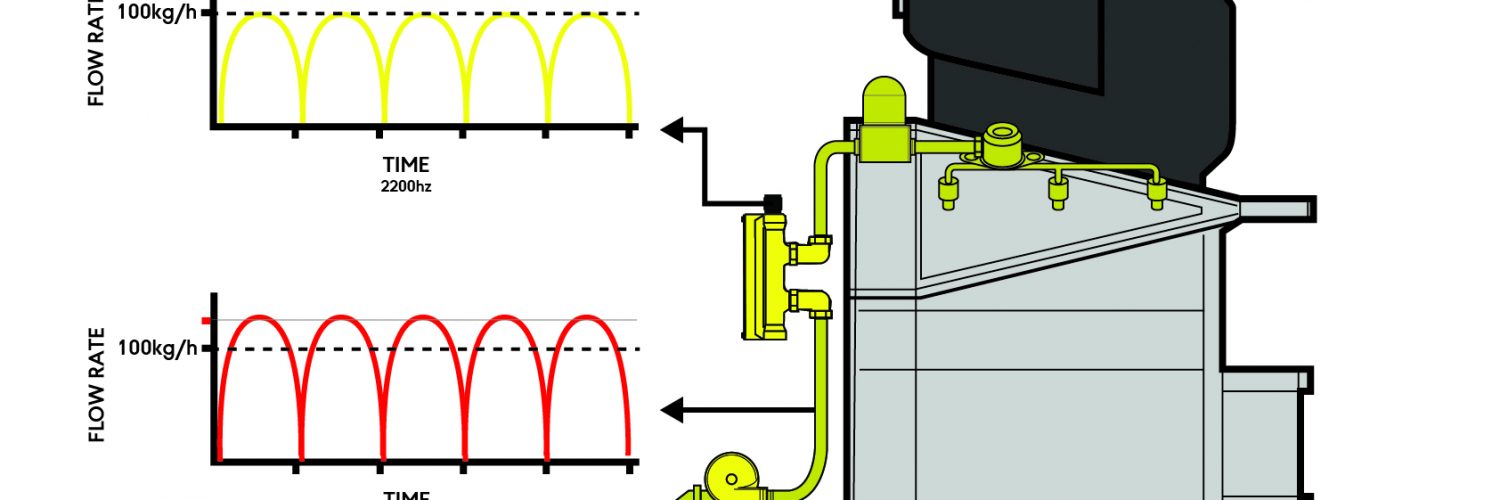A myth surrounding Ferrari’s involvement in F1 is that the engine is all important, with Enzo Ferrari even once simplifying his thinking to “I build engines and attach wheels to them”. But for many years this hasn’t been the case, with the Maranello engines being outgunned by its rivals. Then, in an apparent reversal of fortunes, the 2019 Ferrari was demonstrably quicker in a straight line and held a power advantage in qualifying. Soon their rivals were crying foul, and the FIA investigated the fuel system after a Red Bull request for a technical clarification. Subsequently, the investigation failed to prove wrongdoing, but doubt remained, and a poorly managed FIA announcement only stirred the waters. So, what might Ferrari have been doing in 2019?
Fuel Flow Regulations
It’s certainly true that for many years Ferrari were the best in the business, its 12 cylinder engines being the most powerful on the grid. However, in latter years and especially since the current hybrid rules, the Ferrari power unit has not been the class of the field, rather Mercedes have had that accolade.
The current power units are hugely complicated, the intention of the 2014 rules were to increase engine efficiency, by using two hybrid systems and a fuel-limited V6 combustion engine. It’s this latter aspect that has created the biggest task for the engine development teams. While the Hybrid systems have proven hard to optimise and only now have matured into reliable systems, the issue is the Hybrid output is capped at 161hp (120kw), given enough energy recovery from both Hybrid systems, this output is available to the driver whenever the car is no longer traction limited, i.e. the driver is at wide open throttle.
Thus, the drive to gain more from the combustion engine has driven the manufacturers into ever more complex fuel/ignition systems. Part of the 2014 rules was to cap the fuel passing through the engine, this was done in two ways. Firstly, a race fuel limit, initially set at 100kg and subsequently increased. Then a fuel flow restriction, which set a graduated maximum flow rate passing from the fuel tank to the engine. Confusingly, this was also set at 100kg, but as this was a fuel flow rate, its defined as 100kg/hour. Equally confusing, the high values have flummoxed many a fan. It’s not that in an hour the engine can use 100kg of fuel, instead it’s an instantaneous rate. This equates to a more understandable 27.8 grammes per second.
These two caps prevented teams running high levels of boost and burning lots of fuel for huge amounts of power. The race fuel cap thus limited power, while the flow rate prevented qualifying boost being used for short periods. This meant that the cars were using a third less fuel than in the V8 era!
To monitor the fuel flow rate, the FIA tendered for a Fuel Flow Meter (FFM). This was initially won by Gill Sensors whose ultrasonic sensor used no moving parts, provided no obstruction to the fuel flow and gave a high accuracy. This was fitted in between the low pressure pump inside the fuel tank and the high pressure pump mounted on the engine itself. The output from the FFM went into the cars main loom and the data from this sensor was shared between the teams ECU and the FIA Safety Data Recorder. Output from the sensor is checked by a third party calibration company, so that all the FFMs read fuel flow at the same rate.
Aside from initial problems with the Red Bull fuel in 2014, the FFM has been a standard part of the current car set up and hasn’t been an issue, even with the supply being re-tendered by the FIA in 2017 and Sentronics thereafter being the sole homologated supplier since 2018.

Machiavellian
From a team perspective, one way to gain power would be run more fuel flow than the FIA intended. This could be done either from keeping within the fuel flow limit, but caching fuel upstream. Or, by beating the flow limit itself.
Through the first years of the engine formula there were technical directives and subsequent rule changes to prevent teams storing fuel upstream of the FFM. That way, the fuel flow would never exceed 100kg/h, but there would be excess fuel ready to flow at a higher rate to the high pressure fuel pump, before being injected into the engine.

There was initially no limit on the volume of fuel retained in the: pipework, accumulators and pumps outside of the fuel tank. The trick was all to easy to exploit and the limit has been set back to initially 2l and for this year 250cc. All too aware of this issue going forwards, the FIA have implemented a spec part to be adopted in 2021, where the pipework from tank to pump will be made by Magneti Marelli and the high-pressure pump supplied by Bosch Motorsport. Thus, there is no potential for any caching of fuel to help feed a higher flow rate.
Beating the Fuel Flow Meter is, of course harder, but gives a direct reward, as the maximum flow rate can consistently be overcome. There is no clear means to bypass or mechanically overcome the FFM, as this would be all too obvious for the FIA technical staff. Even playing with fuel formulation to find a petrol mix that somehow is detected at a lower rate is impossible, as the FIA require the FFMs to be recalibrated if a new fuel blend is produced.
So, it turns to the electrical signal as a possible means to beat the FFM. Sensors and the car’s data acquisition system gather sensor data at various sampling rates. For the FFM the rate is 2.2kHz, that’s 2200 readings every second. So, the sensor reads the fuel flow and produces signal with the measured flow over time. This can be visualised as a graph of blips, one blip every 5,000th of a second, with the height of the blip corresponding to the measure flow. If the peak is higher than 100kg/h then the fuel flow is illegally high. As mentioned above both the team and the FIA have access to and record this data.
If that data can be manipulated, by hiding the peaks in the fuel flow signal, then the FIA could read the fuel flow as less than is actually being pumped to the engine. Such capping of the spikes in the signal is known as aliasing. This could be done in one of two ways, alter the signal or alter the fuel flow itself.
Altering the signal has been rumoured, with stories of high voltage wires in the hybrid system being routed under the fuel flow meter to disturb signal with electrical interference. Or something similar but having the effect of phasing the creation and recording of the FFMs signal. That way, the peaks of the signal aren’t read, instead the recording taking place either just before or after the peak, thus lower down the blip on the graph.
 Another means might be the fuel flow, as the electric pump doesn’t deliver a constant steady stream of fuel flow. In reality the fuel flow is pulsed, in a similar way to the blips on the FFM signal, the fuel flow graph has waves, were the fuel flow varies by a small amount at peak flow. It could be that those peaks are the maximum fuel flow above the 100Kg/h rate, but the lower points below the peaks are at 100kg/h. If that can be phased with the FFM sampling rate, then the signal would only read the lower figures, tricking the FIA into believing that the maximum flow is no higher than 100kg/h. To do this the team would need to synchronise the sampling rate with the pumps natural frequency. As the output from the FFM is open to the team they have the means to have a feedback loop, constantly adjusting the pumps output to the FFM.
Another means might be the fuel flow, as the electric pump doesn’t deliver a constant steady stream of fuel flow. In reality the fuel flow is pulsed, in a similar way to the blips on the FFM signal, the fuel flow graph has waves, were the fuel flow varies by a small amount at peak flow. It could be that those peaks are the maximum fuel flow above the 100Kg/h rate, but the lower points below the peaks are at 100kg/h. If that can be phased with the FFM sampling rate, then the signal would only read the lower figures, tricking the FIA into believing that the maximum flow is no higher than 100kg/h. To do this the team would need to synchronise the sampling rate with the pumps natural frequency. As the output from the FFM is open to the team they have the means to have a feedback loop, constantly adjusting the pumps output to the FFM.
Its not known what if anything Ferrari have been doing with the output from the FFM, the FIA have come to an off the record agreement with Ferrari and already for 2020 there is a new second FIA-only FFM to try to prevent these sorts of practices.
Resolution
The introduction of the FIA FFM for 2020 is designed to prevent any controlled manipulation of the Fuel Flow Meter. Fully described in the preceding Motorsport.tech article, now a second FFM is fitted upstream of the team’s FFM. However, the signal from the FIA FFM uses encryption and anti-aliasing technology to prevent teams being able to use a feedback process to ensure the peaks of the fuel flow aren’t recorded. Hence, the sampling rate is randomised, and the signal encrypted from the FIA FFM, which is then sent direct to the FIA SDR on a separate wiring loom. Team will have no access to this signal, therefore will have no idea how much flow the FIA are measuring.
Which appears to end the potential trickery, although the legal question remains unanswered and for others to decide; did Ferrari do something and was it illegal?




